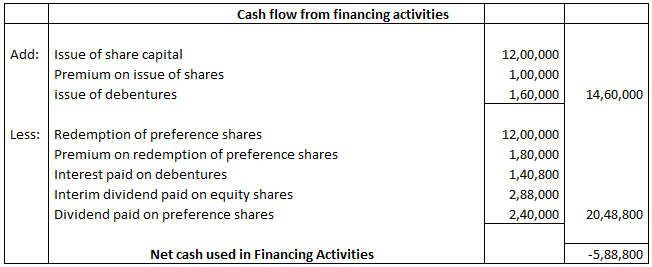Contents
There can be further sub-classification of these; for example, material into raw material, components, maintenance material, etc. Classification of Cost is the process of arranging costs according to their common characteristics. It is the logical placement of like items together according to their common features. Thus, the cost is nothing but a payment of value that is given in order to utilize the service or goods. The concept of cost gives an indication of the overall resource required to avail the same. The organisation must compare the extra Rs 150 expense to the revenue gained by Rs 200 to decide whether to proceed with enhancements.
Generally, managers choose the option that will allow them to save on costs. The variable cost of manufacturing the product is compared with the purchase price of the product when bought from an outside supplier. Organisations must consider current/relevant costs when making strategic decisions that include the future costs that need to be incurred. The relevant costs are compared to the revenue contribution of two different choices.
- Standard costs are compared with actual costs to find out the differences or variances.
- If a consumer needs a worth quote for a particular order, administration only considers the variable prices to provide the products, specifically material and labor prices.
- The indirect material, labor and expenses can be categorized as overhead costs.
- The board has issued 24 standards to create a better knowledge of distinct components of cost and better procedures to be used.
Examples of relevant prices within the context of a make or purchase choice include direct labor, direct materials, variable overhead. Other prices that ought to be considered on this category are any incremental costs necessary for an element manufacturing. The make-or-buy determination is the act of creating a strategic alternative between producing an item internally (in-house) or buying it externally . Irrelevant costs are costs, both optimistic or unfavorable, that would not be affected by a management determination. Irrelevant costs, similar to fixed overhead and sunk prices, are therefore ignored when that decision is made.
Opportunity Cost
Sunk cost are costs incurred in past whereas irrelevant cost are costs which are not relevant in decision making. Irrelevant cost comprises sunk costs, future costs already commited and future costs which https://1investing.in/ are same in different alternatives. Cost accounting is a system of recording and analyzing the cost of products or services in order to contribute towards strategic planning and improve cost efficiency.
Each cost item apparent or hidden needs proper attention before assumption are built in the solution. It is not proper to proceed on the assumption in the context of relevant costing. The cost so indicated on the relevant cost statement is valid only at a given level of activity.
Relevant costs for getting the product are all the expenses relating to purchasing a product from suppliers. Irrelevant costs are the bills involved no matter whether or not the nice is produced internally or bought externally. Carry out the quantitative evaluation by comparing the bills incurred in every option. The expense of purchasing merchandise is the price paid to suppliers to buy them. For example, a furnishings manufacturer is contemplating an outdoor vendor to assemble and stain wood cabinets, which might then be completed in-home by adding handles and other particulars. The relevant costs on this determination are the variable costs incurred by the manufacturer to make the wooden cabinets and the price paid to the skin vendor.
Irrelevant prices are these that will not change sooner or later if you make one decision versus another. Many of the prices that will ‘differ’ are variable prices as a result of variable costs change in complete when exercise modifications. Identifying the behavior of costs allows managers to anticipate how each price will behave under various conditions. By precisely and completely specifying and qualifying suppliers and uncooked materials, these merchandise will be best suited for their supposed use and goal market. No matter how nicely you handle your manufacturing and distribution processes, in case your raw supplies are sub-par, your product is probably not as efficacious or profitable as you had envisioned. A company may contemplate concerns regarding the reliability of the supplier, particularly if the product in query is critical to regular enterprise operations.
Income Tax
Low volumes favor shopping for, which incurs very little or no fastened prices. It would possibly initially appear that a make or buy analysis is a quantitative one which entails a easy comparison of inner production prices to a supplier’s quoted worth. A make-or-purchase decision is an act of choosing between manufacturing a product in-home or buying it from an external provider.

Prime prices are a enterprise’s expenses for the weather involved in production. This cost is incurred during the process of converting raw materials into finished products. When there relevant cost meaning is an increase in one unit of output, the total cost is increased and this resultant increase in the total cost from the existing level to the new level is known as marginal cost.
In this situation, though direct material cost is the future cost to be incurred in accordance with the production, it is irrelevant, but, it is not a sunk cost. Therefore sunk costs are part of irrelevant cost but irrelevant cost also include future costs. This is as a result of at $forty,000, it prices much less to manufacture the bearings internally than to buy them from an external provider.
Think about all the qualitative components that may have a bearing on the choice to fabricate the products. This incorporates all pertinent components that can not be decreased to numbers such as the standard of the enterprise’ manufacturing division and its experience. Keep in mind that depreciation of particular equipment is mentioned as one of many expenses for manufacturing the bearings internally. Owing to the fact that the gear has already been purchased, this depreciation is a sunken expense and is, subsequently, not applicable. If the tools might be utilized to create one other product, this can be a related expense as properly.
The Board has issued 24 standards to bring about better understanding of various elements of cost and best practices to be used. This cost is the actual cost that is ascertained after it has been incurred. This cost is incurred at a given level of output under unfavourable conditions like destruction due to fire or shutdown or machinery, etc.
Costs Classified for Managerial Decisions
That is, mounted prices, beneath situations of enough idle capability, are not incremental and shouldn’t be thought-about as part of the fee to make the part. The make or buy decision involves whether to manufacture a product in-house or to purchase it from a third party. The outcome of this analysis should be a decision that maximizes the long-term financial outcome for a company. Our experts suggest the best funds and you can get high returns by investing directly or through SIP.

In any industry, the axiom that one must “spend money to make money” is expressed in the sunken cost phenomenon. This cost arises when one alternative is rejected or sacrificed to use another alternative. It depends upon the managerial decision to give up on one alternative to choose something else. This cost does not involve any cash outlay and as a consequence, it is not included in the financial records.
Relevant cost, in managerial accounting, denotes to the incremental and unnecessary cost of implementing a business decision. It is just an improved application of basic principles to business decisions. The major factor in relevant costing is the capacity to clean what is and is not pertinent to a business choice.
Elements of cost in cost accounting
It was charged Rs 1,00,000 a month for factory lease, and Rs 10,00,000 for the machine that was bought outright. The company makes Short Handle cricket bats which cost Rs 2,500 per bat and sell for Rs 3,199 per bat. Avoidable costs are the costs that could have been escaped or eliminated under any given condition of performance efficiency. Unavoidable costs are the costs that are essential and could not have been escaped or eliminated from its occurrence.
Sunk costs are not relevant for decision making because they are past costs. Velocity of circulation is the amount of units of money circulated in the economy during a given period of time. Per 21 CFR 111.70, you should set up specs for id, purity, efficiency and composition. Once the specs are established, you must check for them to show that the provider’s Certificate of Analysis and the material meets the specs. In a month, ABC Company usually produces and sells 8,000 units of its product for $20.
Fixed cost is that cost that is not affected by any variation in the volume of output. The amount of fixed cost tends to remain constant for all volumes or production within the fixed capacity of the plant. Costs which can be directly identified with cost centres, processes or production units are direct costs. This classification is important as it serves to find out the different elements of the cost of a product and what is the relative importance of each element in the total cost of a product.

